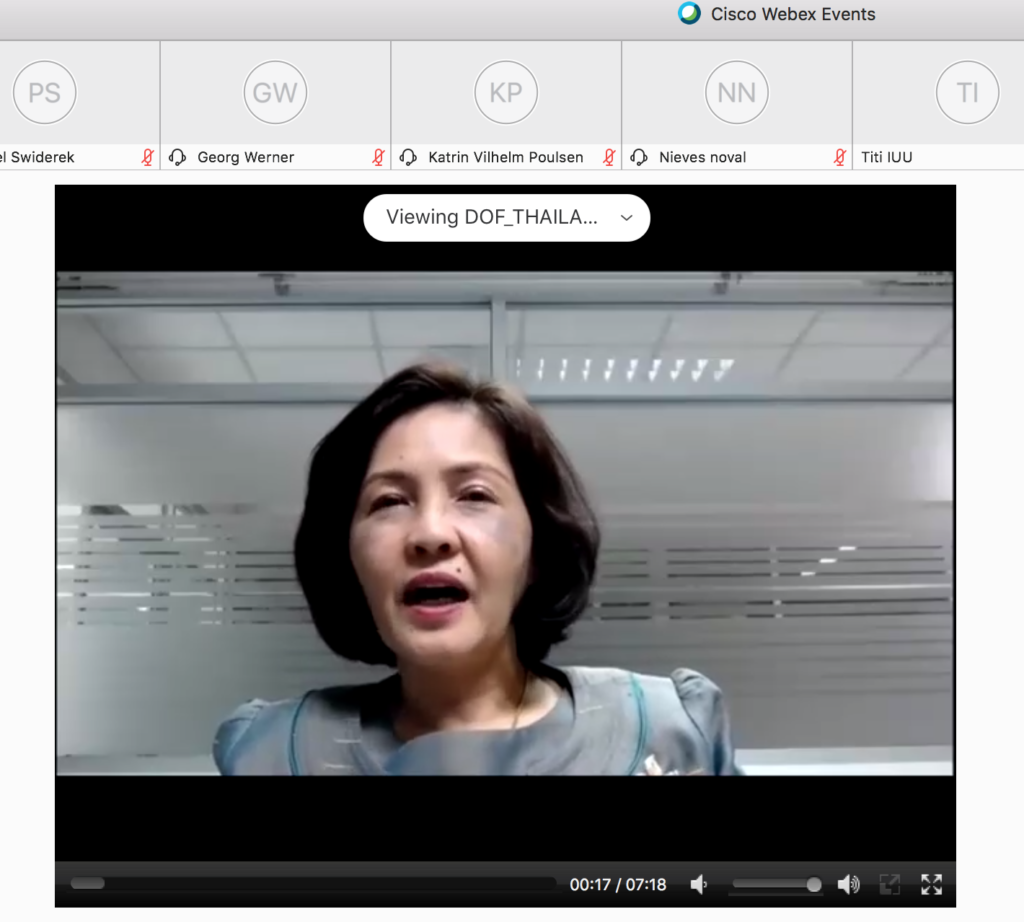Illegal, unreported and unregulated (IUU) fishing endangers fish populations, damages marine habitats, contributes to unfair competition between fishers and can threaten the food security of coastal communities.
IUU fishing is therefore a major cause of social, economic and environmental damage, and contributes to losses of billions of euros, according to estimates. While the EU has been a pioneer in the fight against IUU fishing, fish imports are currently still accompanied by paper-based catch certificates, and there is no fully digital EU-wide system yet to share information between Member States. As a result, the EU market remains vulnerable to imports caught through illegal fishing activities, hurting business and livelihoods of legal operators.
Taking catch certificates online
EU Member States and operators could significantly improve the fight against IUU fishing if they replaced the traditional paper-based catch certificate scheme with an EU-wide digitised system. Such a scheme – known as ‘CATCH’ – has been proposed by the European Commission and is currently being considered by EU countries across the bloc.
In a recent webinar, ClientEarth and the EU IUU Coalition brought together high-level experts to discuss best practice for using the new centralised electronic scheme to accelerate the fight against IUU fishing in the EU.
IUU fishing – the need for digitising import controls
Pierre Karleskind, the Chair of the European Parliament Committee on Fisheries, pointed out: “Sixty percent of the seafood that we consume in Europe is imported” and explained that the EU has therefore invested significant efforts on policies to ensure that no IUU-derived products are imported into the market. “This is our duty to the consumers, to the citizens and to our fishermen.”
According to Mr Karleskind, “The EU has to be at the forefront of the fight against IUU fishing […], our current regulation still needs to improve by modernising the traceability instruments like the catch certificates.”
CATCH: reaping the rewards of an electronic monitoring system
Several of the largest importers in the bloc– such as Spain, Germany or France – receive between 40,000 and 60,000 paper catch certificates every year. But trends in trade flows suggest that operators may be exploiting certain EU borders which have, by comparison, weaker controls.
Reports published by ClientEarth and the EU IUU Coalition show that the weaknesses in EU countries’ current import control schemes and uneven standards could be creating loopholes for products that were sourced illicitly or are linked to IUU fishing.
The use of CATCH would prevent some of these problems by increasing efficiency, security and creating a system less vulnerable to fraud.
The benefits of CATCH were reiterated during the event by Anna Kullmann from the German Federal Office for Agriculture and Food, noting that CATCH would be necessary to perform EU-wide quantity management and that this would make IUU controls much more effective.
This was further stressed by Ms Marta Lopez, Chief of Unit – Intelligence Against IUU Fishing from the Deputy Directorate-General of Fisheries Surveillance and Fight Against IUU of Spain, who noted: “The principal advantage [of CATCH] is evidently that the use of paper is abandoned. There is also the immediacy of the communication of the results of inspection, the impossibility of overuse [of catch certificates] as well as direct control of balances.”
Need for implementation
The EU IUU Regulation, which entered into force in 2010, remains the most far-reaching and influential system of its kind in operation today. However, to strengthen its implementation and stop illegal fishing products from entering the EU, it is key that Member States, especially those that do not have their own digitised system, start using CATCH before it becomes mandatory.
However, even after the system becomes mandatory for EU Member States, its use will only be voluntary for non-EU country authorities and exporters. Nonetheless, there is already interest from countries outside the EU.
The representative of DG MARE highlighted that while non-EU countries also had IT systems to manage their fisheries, “one of the future challenges will be to match IT environments. Achieving this will reduce administrative burden and also ensure more reliable data for related verifications “.
“Thailand is one of the main producers; for us it’s very important to coordinate with the EU system and improve the cooperation,” said Ms Wanwipa Suwannarak, Director of Fish Inspection and Quality Control Division from the Department of Fisheries of Thailand.
From an industry perspective, Anna Boulova from FRUCOM, stressed that practical implementation was paramount, and each party has its responsibilities. Good cooperation between the European Commission, the authorities and seafood operators in the EU and in origin countries was “the way forward,” adding the need for promoting the system: “The key point would be trainings, information and communication.”
Beyond CATCH: The benefits of globally consistent import control schemes
In conclusion, Katrin Vilhelm Poulsen from the EU IUU Coalition emphasised that “the more seafood importing countries have robust import control schemes that trace seafood, the more difficult it is for illegal operators to seek out and exploit ‘markets of convenience’ – weak entry points.”
This holds true beyond the borders of the EU. Major seafood markets should work together to streamline the systems they use to control imports, Ms Poulsen urged, and align the Key Data Elements that they request. This will help fishers and all other operators in the fisheries supply chain to reduce the cost of complying with multiple systems and prevent illicit trade diversions.Given this need for more aligned control schemes across jurisdictions, Ms Poulsen pointed to a statement by important seafood businesses and associations from the sector – such as Europêche, the Global Tuna Alliance, FRUCOM, Opagac and others – which explicitly calls on major market States to work towards closer harmonisation of import controls.
Watch the webinar recording here.

Ms Wanwipa Suwannarak, Director of Fish Inspection and Quality Control Division from the Department of Fisheries of Thailand
